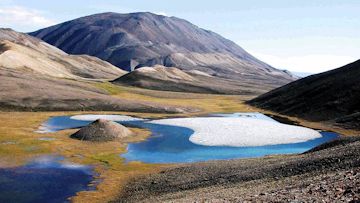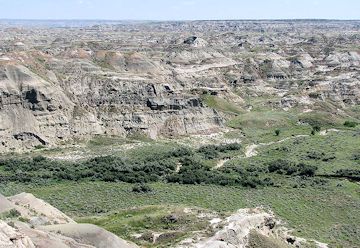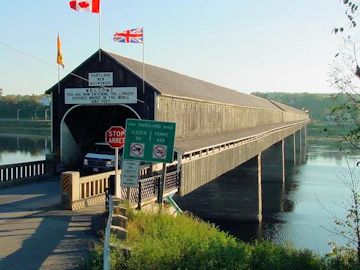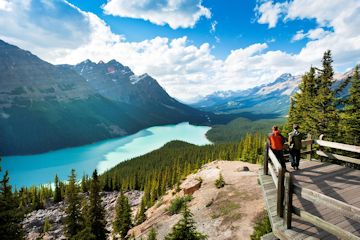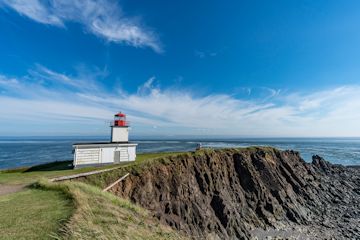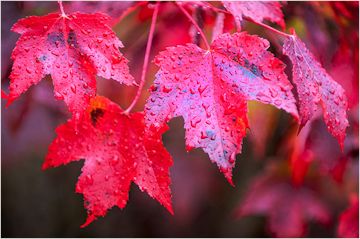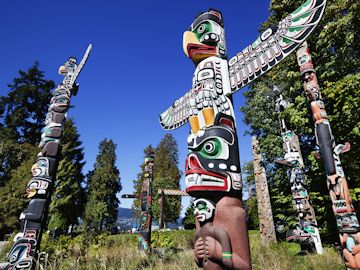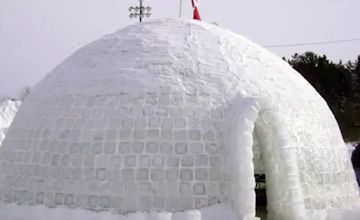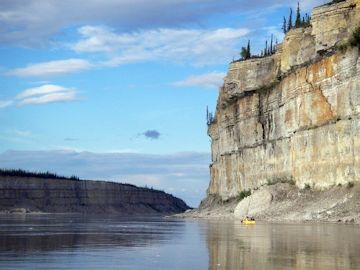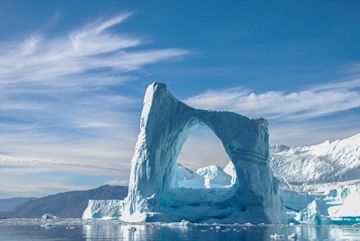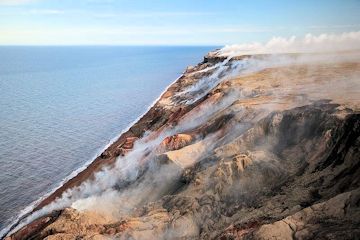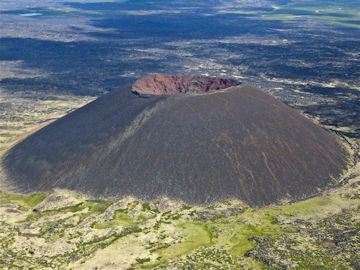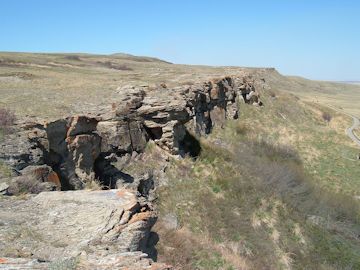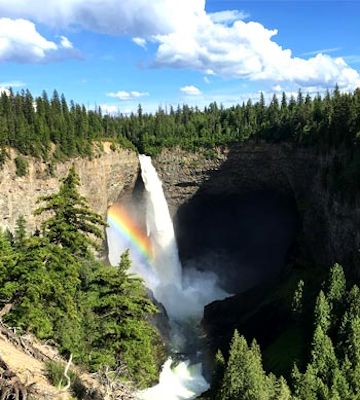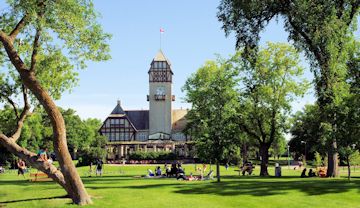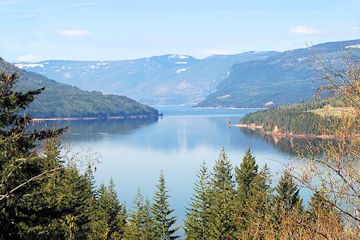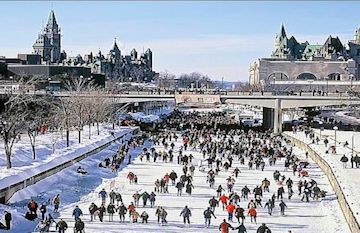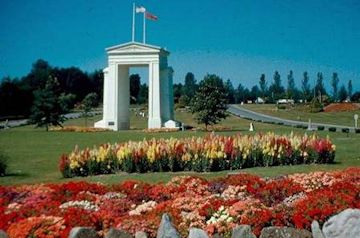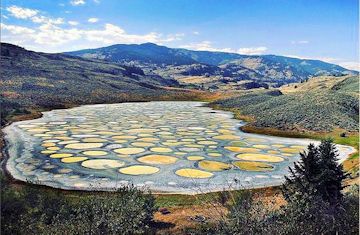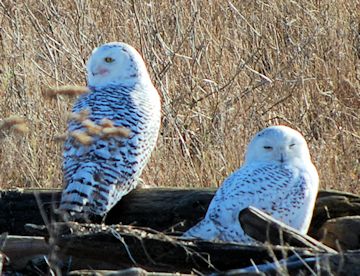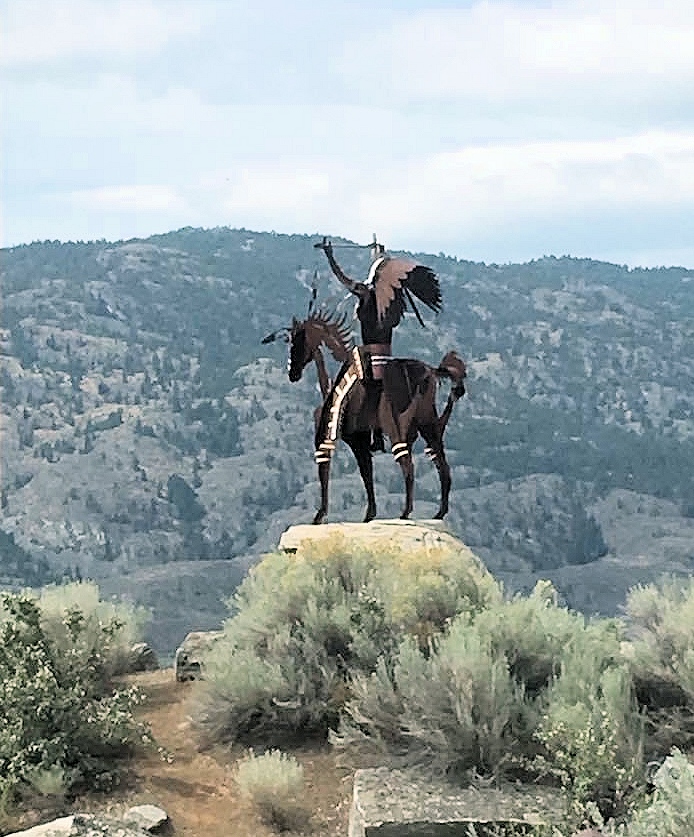
Wonders of Canada
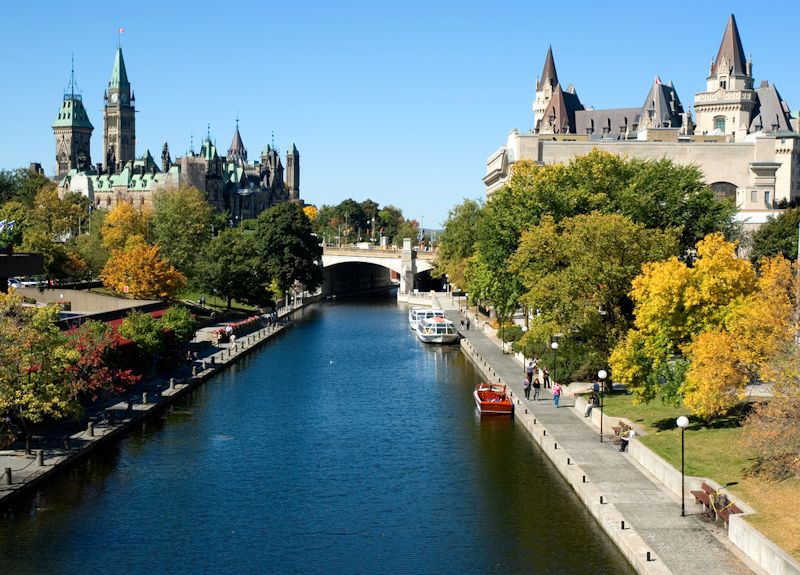
The Rideau Canal, also known unofficially as the Rideau Waterway, connects Canada's capital city of Ottawa, Ontario,
to Lake Ontario and the Saint Lawrence.
Page Two
Ellesmere Island
On the northern tip of Canada lies Ellesmere Island the tenth largest island in the world, one of Earth's last great wilderness domains. Lying just 800 kilometers from the North Pole and 25 kilometers from Greenland, our second largest national park offers spectacular mountain scenery, huge glaciers, deeply incised fiords, and ice shelves extending far into the sea. Lake Hazen, the largest lake within the Arctic Circle, offers a unique opportunity to observe the wildlife and vegetation in the fragile environment of a polar oasis
Dinosaur Provincial Park
About two hours east of Calgary, Alberta, the gently rolling prairie grasslands suddenly drop off, plunging the visitor into a whole other world of hoodoos , pinnacles, coulees and buttes. Many who visit these badlands for the first time describe this sudden transition as if they have taken a wrong turn and somehow ended up on the moon. Strange land formations rise up on all sides, sculpted by wind and water into hauntingly beautiful shapes sunbathed in terra cotta, bronze and amber. Website
Hartland Covered Bridge
The 1,282 foot Hartland Covered Bridge is the longest covered bridge in the world. It was originally constructed by the Hartland Bridge Company, which was formed by citizens on both sides of the St. John River, and officially opened July 4, 1901.
The side walkway was added to the bridge in 1945 and on June 23, 1980, the Hartland Covered Bridge was declared a National Historic Site and on September 15, 1999 it was declared a Provincial Historic Site.
Banff National Park
In the fall of 1883, three Canadian Pacific Railway construction workers stumbled across a cave containing hot springs on the eastern slopes of Alberta's Rocky Mountains.
From that humble beginning was born Banff National Park, Canada's first national park and the world's third. Spanning 6,641 square kilometres (2,564 square miles) of valleys, mountains, glaciers, forests, meadows and rivers, Banff National Park is one of the world's premier destination spots.
Cape d'Or Light House - Nova Scotia
This Cape of Gold, as it translates into English, is named for the particular hue of the incredible sunsets over the water. There has been a lighthouse on this cliff-edged point of land where the Bay of Fundy runs into the Minas Basin since 1922. Today's lighthouse, built in 1965, is the only lighthouse facility in Nova Scotia with overnight accommodations.
Maple Leaf Tree
Since 1965, the maple leaf has been the centre piece of the National Flag of Canada and the maple tree bears the leaves that have become the most prominent Canadian symbol, nationally and internationally.
Maple leaf pins and badges are proudly worn by Canadians abroad, and are recognized around the world. The maple tree was officially proclaimed national arboreal emblem of Canada on April 25, 1996.
The Province of Manitoba
Manitoba is known as the land of 100,000 lakes.
-Lake Winnipeg, Lake Winnipegosis and Lake Manitoba are three large lakes.
-The three largest rivers are the Churchill River, Nelson River, and Hayes River.
-The three rivers flow into the Hudson Bay in northern Manitoba.
-Winnipeg Manitoba's capital sits at the Fork of the Red and Assiniboine rivers
Totem Poles
Are carved wooden pillars made by the First Nations of the Northwest Coast. They are usually carved from the great redwood trees of the NorthwestTotem poles often have very interesting stories to tell. The figures on the poles are mythical beings from the First Nation's ancestral past.
Stanley Park in Vancouver, British Columbia is recognized around the globe as one of the great parks of the world.
The totem pole display area at Brockton Point is the most visited tourist attraction in all of British Columbia and it has an interesting history
The igloo is an iconic structure recognized around the world. At once beautiful and strong, simple yet complex, the architecture of an igloo represents an ingenious use of nature's materials to suit human needs.
It's been decades since igloos were a common form of housing for the Inuit, but traditionally, they ranged in size from small, one-person overnight shelters to large ceremonial complexes linked by smaller igloos.
The Mackenzie River ( Dene : Deh-Cho , big river ) is the largest river system in Canada . It flows through a vast, isolated region of forest and tundra entirely within the country's Northwest Territories , although its many tributaries reach into four other Canadian provinces and territories . The river's mainstream runs 1,738 kilometres (1,080 mi) in a northerly direction to the Arctic Ocean , draining a vast area nearly the size of Indonesia . It is the largest river flowing into the Arctic from North America , and with its tributaries is one of the longest rivers in the world .
Artic Oasis or Polynya
Located in the far north of Nunavut, areas where pockets of warm water prevent freezing. The Polynya at Lancaster Sounds attracts one of the largest gatherings of sea mammals in the words
the Smoking Hills are located about a kilometre south of the Beaufort Sea. Here, vast deposits of lignite -- concentrations of carbon-rich shale and pyrite rich in sulphur - literally ignite spontaneously when the hills erode and the mineral veins are exposed to the air, producing a constant smoke. These hills give the community of Paulatuk its name.
Eve Cone is a young, well preserved cinder cone at Mount Edziza, British Columbia.
Head-Smashed-In Buffalo Jump, Alberta,was designated a World Heritage Site by UNESCO in 1981 and today includes an interpretive center where visitors can learn more about the importance of the buffalo and the people who depended on it.
For thousands of years, Native hunters of the western plains used an extremely efficient way of hunting buffalo. They would drive entire herds of buffalo over cliffs they called buffalo jumps
Helmcken Falls is a 141 m (463 ft) waterfall on the Murtle River within Wells Gray Provincial Park in British Columbia , Canada . The protection of Helmcken Falls was one of the reasons for the creation of Wells Gray Provincial Park in 1939.
Helmcken Falls is the fourth highest waterfall in Canada, measured by total straight drop without a break. Higher Canadian waterfalls are Hunlen Falls in Tweedsmuir Provincial Park , Takakkaw Falls in Yoho National Park , and Della Falls in Strathcona Provincial Park , all in British Columbia
Assiniboine Park Winnipeg Manitoba One of the worlds great parks. Featuring a Zoo, Conservatory,charming gardens, Leo Mol Sculpture Garden, Qualico Family Centre, Pavilion Gallery Museum, Nature Playground, Steam Train and more
Home of International Polar Bear Conservation Centre
Shuswap Lake is a lake located in south-central British Columbia that drains via the Little River into Little Shuswap Lake . Little Shuswap Lake is the source of the South Thompson River, a branch of the Thompson River , a tributary of the Fraser River . It is at the heart of a region known as the Shuswap Country or "the Shuswap", noted for its recreational lakeshore communities including the city of Salmon Arm . The name "Shuswap" is derived from the Shuswap or Secwepemc First Nations people, the most northern of the Interior Salish peoples, whose territory includes the Shuswap
North America's oldest artificial waterway Location: Greater Ottawa Area Region: Eastern Ontario The ‘wow': The Ottawa leg of the 200 km Rideau Canal National Historic Site and UNESCO World Heritage Site is also the world's longest skating rink. Beautiful in summer, but the site is at its best when the skating (and festival) season is on in January and February during the legendary Winterlude festival in the capital.
The Peace Arch is a gateway-type monument situated on the Canada-United States border between the communities of Blaine, Washington and Surrey, British Columbia The Peace Arch, standing 20.5 meters tall, was built by Sam Hill and dedicated in September of 1921 , The monument is built on the exact United States - Canada boundary
The inscription on the U.S. side of the Peace Arch reads "Children of a common mother", and the words on the Canadian side read "Brethren dwelling together in unity". Within the arch, each side has an iron gate hinged on either side of the border with an inscription above reading "May these gates never be closed".
Spotted Lake located near Osoyoos BC , historically a sacred lake known for it's high concentration of minerals that were believed to have healing properties.
The Snowy Owl ( Bubo scandiacus ) is a large owl of the typical owl family Strigidae. The Snowy Owl was first classified in 1758 by Carolus Linnaeus , the Swedish naturalist who developed binomial nomenclature to classify and organize plants and animals.
The bird is also known in North America as the Arctic Owl , Great White Owl , Icelandic Snow Owl , or Harfang . Until recently, it was regarded as the sole member of a distinct genus , as Nyctea scandiaca , but mtDNA cytochrome b sequence data (Olsen et al. 2002) shows that it is very closely related to the horned owls in the genus Bubo .
The Snowy Owl is the official bird of Quebec
Photo by Robert A Bell at Boundry Bay
Delta British Columbia
Nk'Mip -Osoyoos BC
Please do not copy any of the images on this website. Copyright laws apply. If you know of other wonders that should be added to the website please contact us.
Additional images of Canada located in the Gallery
Home | Sitemap | Gallery | Maps |Contact |©2020 Robert A Bell
